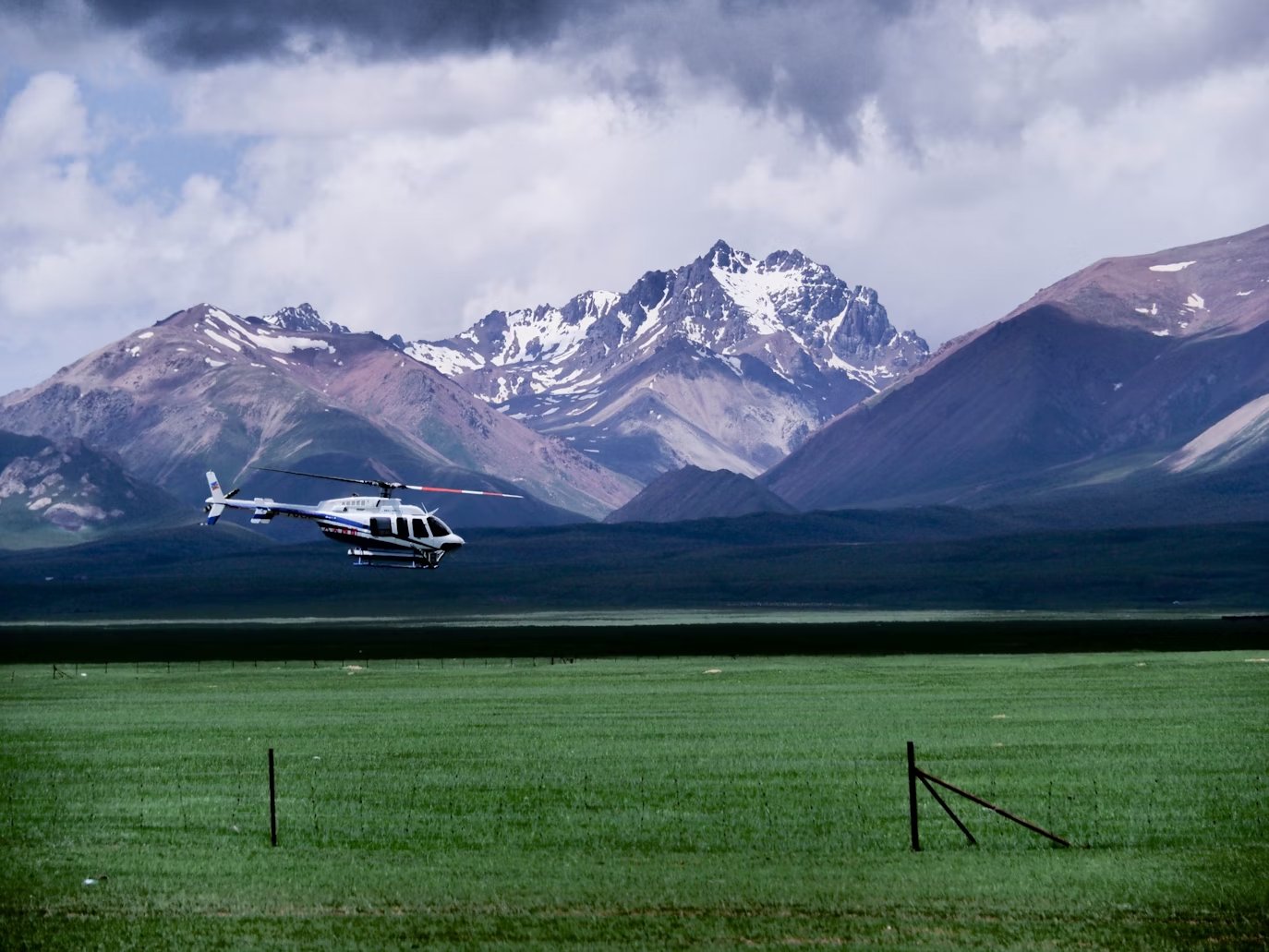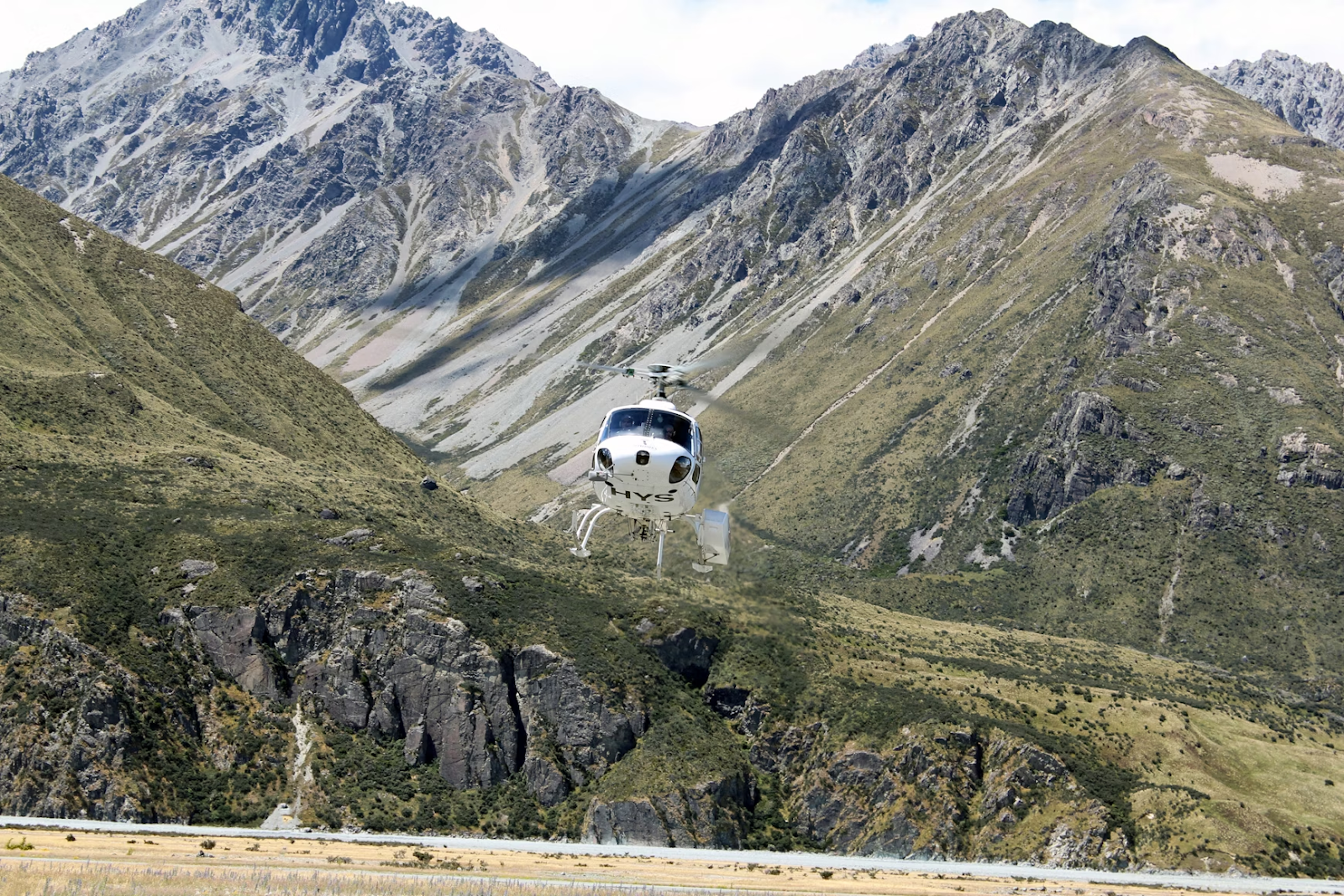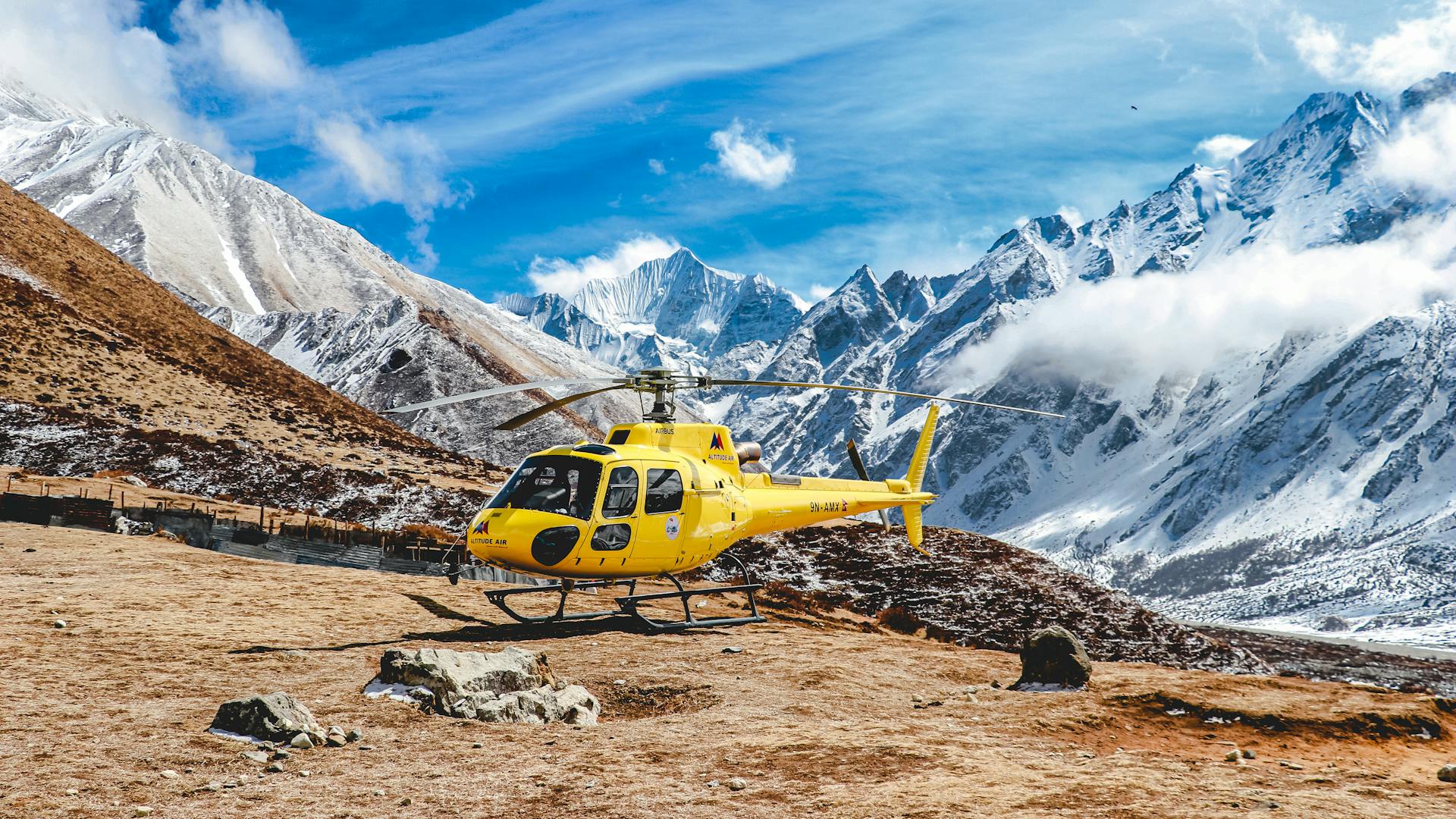Mountain flying is one of the most complex and demanding challenges a helicopter pilot can undertake. While the scenery is often breathtaking, the risks are real. Thin air, unpredictable winds, rugged terrain, and unexpected psychological impacts can turn a routine flight into a true test of a pilot’s training, judgment, and skills.
Whether you’re an aspiring pilot or someone considering hiring an experienced helicopter company to perform difficult operations in high-altitude landscapes, understanding these unique challenges is essential.
Keep reading to learn about advanced techniques for mountain missions, psychological threats pilots must be prepared to face, and the training crews must undertake in case of unexpected hazards or emergency situations. You’ll discover what factors impact safe and effective mountain flying and learn why hiring skilled professionals like the team at Helicopter Express makes a world of difference.
Advanced Mountain Flying Techniques for Helicopter Pilots
Mountain flying presents unique challenges that demand specialized skills, precise planning, and constant vigilance from helicopter pilots. Here are the advanced flying techniques that pilots operating in vertical terrain must master.
Altitude, Speed, and Power Management
High-altitude flying places significant strain on helicopter performance. Thin air reduces lift, engine power, and rotor efficiency, demanding careful planning and execution.
Pilots must account for these limitations by:
- Consulting performance charts
- Calculating density altitude
- Planning lighter loads when necessary
Managing Performance During Wind Shears and Downdrafts
During flight, precise management of speed, climb rate, and altitude becomes critical for clearing terrain and responding to downdrafts. When encountering wind shear or severe downdrafts, pilots must carefully balance airspeed control with altitude management.
Best practices include:
- Reacting quickly by turning toward clear areas
- Leveling the aircraft appropriately
- Maintaining optimal climb rate to ensure safe and stable flight operations
Terrain Assessment
Helicopter pilots must also be capable of properly assessing, taking off, flying, and landing safely around the many distinctive features associated with mountains.
These features include:
- Canyons: These narrow valleys with steep walls can funnel winds and limit maneuvering space.
- Cirques: These bowl-shaped basins are often surrounded by cliffs, creating tricky wind patterns and limited escape routes.
- Glaciers and Snowfields: Large, icy surfaces can cause glare, hide crevasses, and make depth perception difficult.
- Pinnacles: Isolated, pointed peaks, called pinnacles, generate strong turbulence and leave little room for error.
- Ridges: These long, narrow high points accelerate winds and cause rapid changes in direction.
- Shoulders: Slope extensions of mountains, called shoulders, may provide potential landing options. However, they often create unpredictable downdrafts as well.
Approach and Departure Techniques
When approaching an unfamiliar mountain airstrip, helicopter pilots should first fly overhead to check the layout, wind, traffic, and terrain before planning a safe landing. Because performance is reduced at higher elevations (especially in summer), they must always confirm they have enough distance for both landing and takeoff.
A careful inspection of the landing surface is essential, since grass, mud, ice, or even hidden animal holes can create unexpected hazards. In case a go-around becomes necessary, pilots must always:
- Maintain precise control of airspeed and descent
- Adjust for gusts
- Have a clear escape plan
Weather and Environmental Awareness
Weather in the mountains can change in an instant. Pilots navigating mountainous conditions must be keenly aware of their surroundings – especially factors including:
- Wind: Some form of wind is nearly always present in highland environments. Understanding its strength and direction is essential for planning the safest, smoothest flight paths.
- Turbulence: Anything that blocks airflow can create turbulence. Hills, trees, or buildings can cause minor bumps, but mountain ranges tend to generate larger, more powerful turbulence. Turbulence severity depends on windspeed, wind direction, and the shape of the terrain. Sudden changes in wind strength or direction, called windshear, can make conditions even more challenging.
- Updraughts and Downdraughts: Rising air on the windward side of a mountain can provide useful lift, while sinking air on the lee side can rapidly pull an aircraft down. Pilots must anticipate these vertical air movements and plan their altitude and power settings accordingly.
- Mountain Waves: When strong winds flow steadily over mountain ranges, they can form powerful, wave-like air currents that extend for miles downwind. These waves can cause smooth lift at times, but they may also hide dangerous turbulence and strong downdraughts.
- Rotors: Swirling horizontal eddies called rotors may form beneath mountain waves. These zones of intense, chaotic turbulence can be extremely hazardous — especially at lower altitudes where pilots have less room to maneuver.
- Clouds: Mountains often generate their own cloud systems. Clouds can quickly obscure the surrounding environment, reduce visibility, and create icing hazards. That’s why local knowledge and careful flight planning is essential.
- Lighting: Snow-covered slopes can produce blinding “whiteout” conditions, while bright sun on rock faces or glare off water can lead to “brightout” or low contrast. Both situations make it hard for pilots to judge distance, slope, and landscape features.
- Season: Seasonal changes bring unique challenges, such as snow and ice in winter, rapid thunderstorms in summer, and shifting winds during spring and fall. Each season requires different preparation techniques and heightened awareness of how quickly optimal flying conditions can deteriorate.
Escape Route Preparation
Mountain operations require pilots to maintain constant situational awareness and plan for potential escape routes throughout every phase of the operation. Discretion is absolutely necessary, as pilots must know when to ground their aircraft if they feel that conditions exceed their level of training or their aircraft’s capabilities.
Ongoing escape route assessment includes:
- Identifying areas of lower terrain
- Evaluating wind conditions
- Maintaining adequate altitude margins

Mountain Flying Mastery: Psychological Factors
Mountain flying can produce unexpected physiological and psychological effects capable of impacting even the most well-trained pilots. That’s why authorities like the European Aviation Safety Agency (EASA) strongly recommend that pilots with less experience operating in hilly and mountainous terrain “undertake dual training and wherever possible fly with a second crew member.”
Below, we’ll cover six key psychological factors that all pilots operating in high-risk mountain environments must train and prepare for prior to embarking on mountain missions:
- Workload: Flying in the mountains demands intense focus, and navigating accurately (while constantly scanning for other aircraft) can quickly drain a pilot’s mental capacity. For those new to mountain flying, the physical and mental stress can erode judgment just when it’s needed most, making preparation essential to handle the workload safely.
- Hypoxia: Hypoxia is a condition that affects pilots when they don’t get enough oxygen to their brain. This condition reduces decision-making ability, inhibits motor skills, and can even cause fainting.
- Spatial Disorientation: This is a phenomenon in which pilots are unable to correctly interpret their altitude or speed in relation to the Earth (or other reference points). Spatial disorientation contributes to 5-10% of all aviation accidents – 90% of which are fatal.
- Visual Illusions: Flying along large mountains can make it very difficult for pilots to accurately judge scale and distance. This often leads to dangerous visual illusions, such as false horizons, where pilots mistake references (i.e. cloud formations, mountain ridges) for the true natural horizon. Mountain faces can also appear to merge into one another, causing poor distance perception and incorrect aircraft alignment.
- Apprehension: Pilots who lack proper training and experience can suffer from increased nerves and apprehension, resulting in indecision that causes them to over-control the aircraft.
- Fatigue: Mountain flying is known for being far more mentally and physically taxing than regular flight. Pilots must be prepared to combat fatigue with proper rest, hydration, and nutrition along with extensive training and continuous self-assessment.

Risk Management and Emergency Preparedness
Even with skill and preparation, mountain flying carries unique risks that require pilots to anticipate problems and plan for the unexpected. Effective threat and error management ensures crews are ready to handle emergencies and improve their chances of safe outcomes in challenging vertical landscapes.
Emergency Response Procedures
Thorough pre-flight planning and preparation is essential. This includes establishing procedures in case of an emergency where immediate assistance is not available.
All pilots operating in hilly regions should:
- Identify safe landing zones along all routes
- Consider potential obstacles, such as power lines and other wire obstructions
- Understand the meteorological risks that alpine regions present
- Factor in extended flight time that may arise due to inclement weather and harsh terrain
- Maintain sufficient fuel in case of unexpected diversions

Emergency Survival Gear
While mountain helicopter operations are still relatively safe, drastically changing conditions and unexpected psychological effects can impact even seasoned pilots. It’s recommended that pilots and their passengers pack comprehensive survival equipment in case they need to survive in remote, high-altitude environments while awaiting rescue.
Aviation authorities such as the Civil Aviation Authority of New Zealand recommend carrying:
- Warm Clothing: Pilots and their passengers should always pack warm clothing, even during summer mountain operations. That’s because temperatures can drop rapidly with altitude changes and weather shifts.
- Survival Supplies: Survival blankets, waterproof matches, reliable flashlights, pocket knives, rope, duct tape, and basic hygiene supplies are crucial for emergency situations.
- Navigation and Visibility Tools: Signal mirrors, whistles, and compasses enable rescue teams to locate survivors while providing stranded crews with basic navigation capabilities.
- Food and Water: Water purification tablets, high-energy foods (i.e. glucose tablets, raisins, chocolates, and soup), and basic fishing supplies can sustain survivors during extended rescue missions.
Need a Lift? Hire Helicopter Express for Complex Mountain Operations
Now that you understand the intricacies of helicopter operations in demanding mountain environments, you can appreciate the level of education and dedication it takes to get the job done right.
At Helicopter Express, we know mountain flying demands more than standard piloting skills. This specialty technique requires extensive training, proven experience, precision equipment, and thorough preparation. Whether you’re managing a construction project, coordinating disaster relief, or planning an aerial operation in difficult terrain, we have the world-class pilots and industry-leading fleet required to deliver safe and efficient results.
If you’re ready to work with mountain flying experts who prioritize safety, mission success, and client satisfaction, contact Helicopter Express today to discuss your requirements. We’ll show you how we can get the job done on time and on budget.

